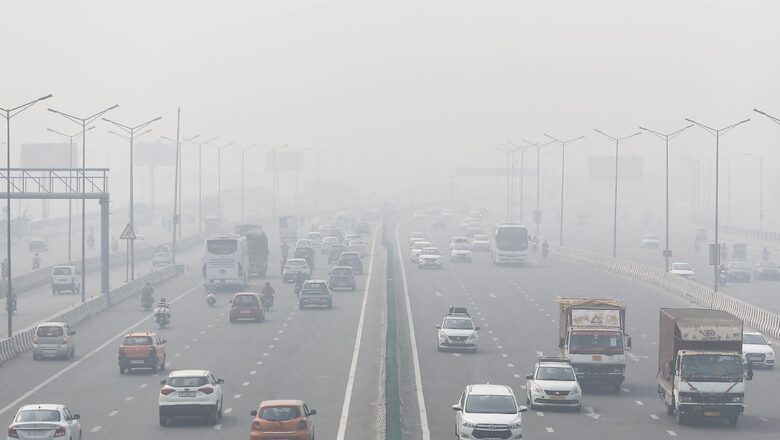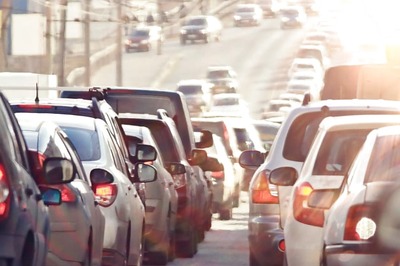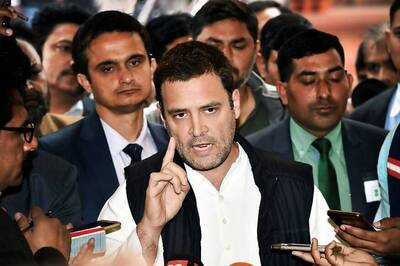
views
Do you own a car with a Delhi registration number? If yes, you may have received messages from the capital’s transport department since Monday about not using BS-III petrol and BS-IV diesel cars till November 13, with a warning that non-adherence could invite a hefty fine of Rs 20,000.
Currently, the department has close to 3,00,000 diesel and 2,00,000 petrol-powered cars registered with it which are following the old emission norms.
What is ‘BS’?
‘BS’ stands for Bharat Stage, the emission regulation or fuel standards mandated by the government of India for motor vehicles.
BS-VI or less polluting emission norms were mandated across the country from April 1, 2020, which meant that all new vehicles being manufactured after the norms were forced to comply with the new standards that cover four-wheelers, two-wheelers as well as commercial vehicles.
While phasing out non-BS-VI vehicles (ie pre-April 2020) is an ongoing and long-term transition, old emission standard vehicles — BS-III and BS-IV — continue to run. However, they have been temporarily restricted in Delhi to reduce their contribution to overall emissions at a time when the city is facing a bad air crisis.
Why the ban?
The Delhi government, in an order on Monday, banned the plying of privately owned BS-III petrol and BS-IV diesel four-wheelers (light motor vehicles (LMVs) in the city under the Stage-3 measures of the Graded Response Action Plan (GRAP) currently implemented in Delhi-NCR to tackle bad air quality.
Delhi’s air has been hovering between the higher ends of the ‘very poor’ and ‘severe’ categories since November 3 when the air quality index (AQI) read 450 in the ‘severe’ zone. Stage-4 GRAP measures were immediately brought into action but lifted soon after as the air improved to ‘very poor’.
However, since imposing a ban on plying of old emission norm private vehicles is recommended under Stage-3, Delhi Environment Minister Gopal Rai on Monday said they will continue with the ban till November 13. The ban is not applicable to BS-III and IV two-wheelers and commercial vehicles, which constitute a larger share of the total vehicles on the road.
NCR towns, including Noida, Ghaziabad, Gurgaon and Faridabad — from where a large volume of vehicles comes to Delhi on a daily basis — have not implemented the ban so far.
How is the ban being enforced?
According to officials in the transport department, they have deployed around 120-130 teams across the city who, along with the Delhi Traffic Police, are working to implement the ban.
“Most car owners were not clear about the vehicle type they own and hence SMSes from the Vahan database have been sent to make them aware of the restrictions and fines in case of violation. Initially, making people aware of the ban was crucial. Enforcement is being intensified now,” said a senior official who did not wish to be named.
The traffic police can also identify such cars with the registration number series.
The department is in talks with NCR states/towns to shift their public transport fleet to CNG-compliant and BS-VI fuel as a large number of buses and other commercial vehicles enter the city from these states.
How do BS-VI emission norms cut down air pollution?
BS-VI grade fuel has only 10 part per million (PPM) sulphur in comparison to BS-III and IV fuels, which have 50 PPM sulphur content. The old emission norm vehicles with high sulphur content contribute heavily to PM 2.5 concentration — the most prominent pollutant in Delhi’s air — which can be brought down at least by five times with the implementation of the cleaner BS-VI grade fuel.
The nitrogen oxides (NOx) emissions, which contribute heavily to pollution in Delhi’s air, too can be brought down by 70 per cent in diesel cars, while the same could be cut down by 25 per cent in petrol-run cars for every kilometre.
What do experts say?
Amit Bhatt, managing director (India), International Council on Clean Transportation (ICCT), said while the ban may have an impact when the situation is bad, it won’t be substantive.
First, two-wheelers and commercial vehicles, which comprise the bulk of emissions — 32% and 40% — have not been restricted under the ban. Second, the PUC (pollution-under control) checking units across Delhi and other states are not up to the mark and unfortunately, there is no on-road emission testing technology available in India at present.
“Even for BS-VI standards, real-world emissions are much higher than lab emissions. It is done on a stationary vehicle and hence, the emissions are not the same of a vehicle running on the road. So, if we aim to cut down vehicle emissions, Delhi-NCR should move to the zero-emissions concept. The first step of this should be to electrify two-wheelers and three-wheelers. The next step is to electrify medium and heavy goods vehicles. We have to create a pathway for this transition like it happened in the case of CNG,” said Bhatt.
Ravindra Kumar, chief scientist, transport planning and environment, CSIR-CRRI, said the current restrictions are an attempt to better air quality at the moment. He added that it is not feasible to bring two-wheelers under the radar.
For commercial vehicles, a large number of goods come to Delhi from NCR towns where the emission norms are even less compliant. “We can only experiment with what is doable at the moment. The transition to BS-VI is slow and difficult, but moving ahead in that direction is crucial. In the next two-three years, real-world emission testing technology may be introduced in India, which can help address the present situation,” he said.
Read all the Latest India News here



















Comments
0 comment